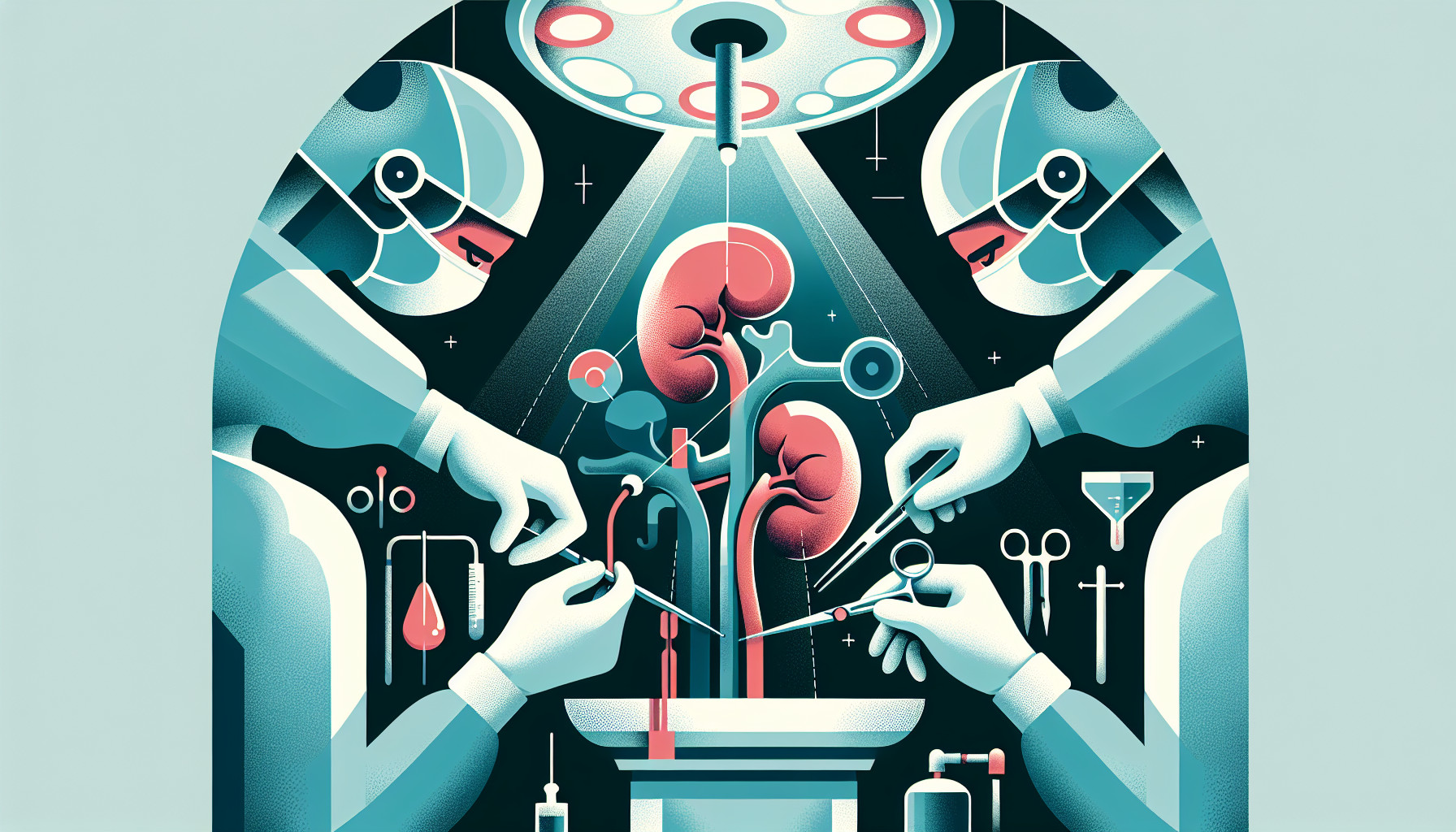Our Summary
This research paper reviews the benefits and risks of using laparoendoscopic single site donor nephrectomy (LESS-DN), a new technique for kidney removal from live donors. This technique, which requires only a single incision, is being compared to the standard laparoscopic nephrectomy that is more widely used. Laparoscopic nephrectomy is preferred because it is less invasive, patients recover faster, and hospital stays are shorter. The researchers looked at three studies involving 179 participants and found no major difference between the two techniques in terms of operation time, blood loss, and complication rates. However, patients who underwent LESS-DN experienced less pain. Despite these findings, the researchers believe that more comprehensive studies are needed to determine if LESS-DN is truly superior to the standard method.
FAQs
- What is laparoendoscopic single site donor nephrectomy (LESS-DN)?
- How does LESS-DN compare to the standard laparoscopic nephrectomy in terms of operation time, blood loss, and complication rates?
- What are the potential benefits of LESS-DN compared to the standard laparoscopic nephrectomy?
Doctor’s Tip
A helpful tip a doctor might tell a patient about laparoscopic nephrectomy is to follow post-operative instructions carefully, including taking prescribed pain medication as needed, avoiding heavy lifting or strenuous activity, and attending follow-up appointments to monitor recovery progress. It is also important to stay well-hydrated and eat a healthy diet to support healing. If any unusual symptoms or complications arise, it is important to contact your healthcare provider immediately.
Suitable For
Patients who are typically recommended for laparoscopic nephrectomy include those with kidney cancer, kidney stones, kidney infections, or other conditions affecting the kidney that require surgical intervention. Additionally, live kidney donors may also be recommended for laparoscopic nephrectomy as it is less invasive and has a faster recovery time compared to traditional open surgery.
Timeline
Before laparoscopic nephrectomy:
- Patient undergoes preoperative evaluation and testing to determine eligibility for surgery
- Patient meets with their surgical team to discuss the procedure and potential risks and benefits
- Patient may need to make lifestyle changes or take medications in preparation for surgery
- Patient may need to fast before the procedure
After laparoscopic nephrectomy:
- Patient is monitored closely in the recovery room for any complications
- Patient may experience pain and discomfort at the incision site
- Patient may need to stay in the hospital for a few days for observation and pain management
- Patient will be given instructions for post-operative care, including wound care and activity restrictions
- Patient will have follow-up appointments to monitor recovery and check for any complications.
What to Ask Your Doctor
Some questions a patient should ask their doctor about laparoscopic nephrectomy include:
- What are the potential benefits of laparoscopic nephrectomy compared to traditional open surgery?
- What are the potential risks and complications associated with laparoscopic nephrectomy?
- How long will the recovery period be following laparoscopic nephrectomy?
- Will I need to stay in the hospital after the surgery, and if so, for how long?
- What are the success rates of laparoscopic nephrectomy in terms of kidney function and overall health outcomes?
- Are there any specific factors that may make me a better or worse candidate for laparoscopic nephrectomy?
- How many laparoscopic nephrectomy procedures have you performed, and what is your experience with this technique?
- Are there any alternative treatment options to consider besides laparoscopic nephrectomy?
- What follow-up care or monitoring will be needed after the surgery?
- Are there any ongoing research studies or clinical trials related to laparoscopic nephrectomy that I should be aware of?
Reference
Authors: Gupta A, Ahmed K, Kynaston HG, Dasgupta P, Chlosta PL, Aboumarzouk OM. Journal: Cochrane Database Syst Rev. 2016 May 27;2016(5):CD010850. doi: 10.1002/14651858.CD010850.pub2. PMID: 27230690
